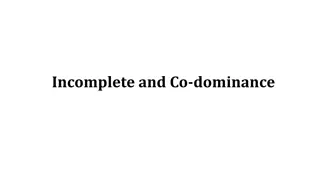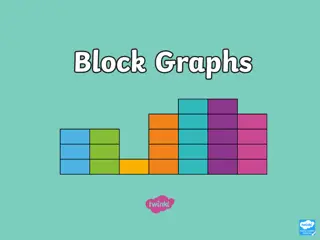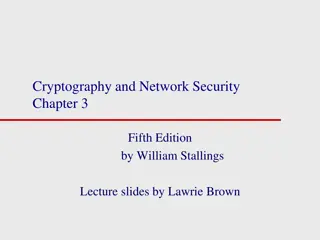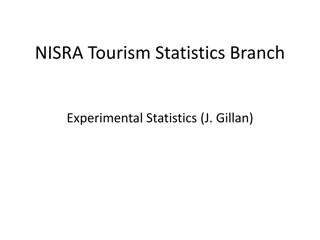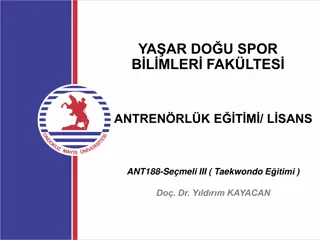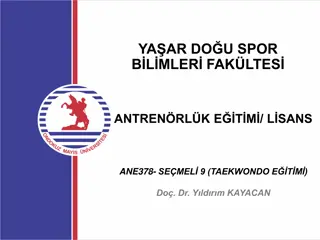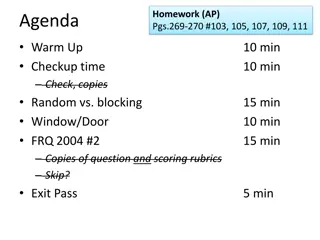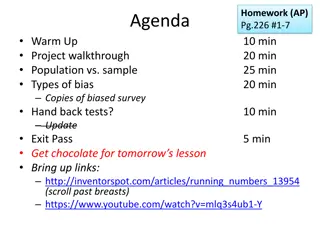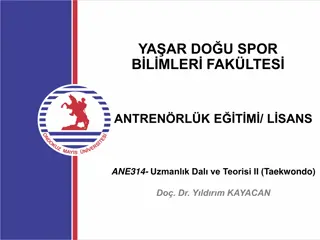Understanding Balanced Incomplete Block Design in Experimental Statistics
Balanced Incomplete Block Design (BIBD) is a crucial experimental design method where treatments exceed units per block. This approach helps efficiently analyze data by organizing treatments into blocks and replicates. In the provided example, Ford Falcon prices quoted by dealers to interviewers showcase how BIBD is applied in real-world scenarios to gather and analyze data effectively.
Download Presentation

Please find below an Image/Link to download the presentation.
The content on the website is provided AS IS for your information and personal use only. It may not be sold, licensed, or shared on other websites without obtaining consent from the author. Download presentation by click this link. If you encounter any issues during the download, it is possible that the publisher has removed the file from their server.
E N D
Presentation Transcript
Balanced Incomplete Block Design Ford Falcon Prices Quoted by 28 Dealers to 8 Interviewers (2 Interviewers/Dealer) Source: A.F. Jung (1961). "Interviewer Differences Among Automile Purchasers," JRSS- C (Applied Statistics), Vol 10, #2, pp. 93-97
Balanced Incomplete Block Design (BIBD) Situation where the number of treatments exceeds number of units per block (or logistics do not allow for assignment of all treatments to all blocks) # of Treatments t # of Blocks b Replicates per Treatment r < b Block Size k < t Total Number of Units N = kb = rt All pairs of Treatments appear together in = r(k-1)/(t-1) Blocks for some integer
BIBD (II) Reasoning for Integer : Each Treatment is assigned to r blocks Each of those r blocks has k-1 remaining positions Those r(k-1) positions must be evenly shared among the remaining t-1 treatments Tables of Designs for Various t,k,b,r in Experimental Design Textbooks (e.g. Cochran and Cox (1957) for a huge selection) Analyses are based on Intra- and Inter-Block Information
Interviewer Example Comparison of Interviewers soliciting prices from Car Dealerships for Ford Falcons Response: Y = Price-2000 Treatments: Interviewers (t = 8) Blocks: Dealerships (b = 28) 2 Interviewers per Dealership (k = 2) 7 Dealers per Interviewer (r = 7) Total Sample Size N = 2(28) = 7(8) = 56 Number of Dealerships with same pair of interviewers: = 7(2-1)/(8-1) = 1
Interviewer Example Dealer\Interviewer 1 2 3 4 5 6 7 8 9 10 11 12 13 14 15 16 17 18 19 20 21 22 23 24 25 26 27 28 Interviewer Mean Block Total A B C * 95 * * * * * 50 * * * * * 75 25 132 145 100 * * * * * * * * * * 88.857 1346 D * * 30 * * * * * 195 * * * * 95 * * * * 99 100 50 35 * * * * * * 86.286 1344 E * * * * 30 * * * * 75 * * * * * 50 * * 235 * * * 150 135 70 * * * F * * * 80 * * * * * * 100 * * * 55 * * * * 100 * * 163 * * 50 75 * 89.000 1246 G * * * * * 88 * * * * * 96 * * * * * 152 * * 50 * * 150 * 100 * 100 H * * * * * * Dealer Mean 112.5 165.0 40.0 106.5 40.0 56.5 145.0 45.5 187.5 70.0 75.0 98.0 160.0 85.0 40.0 91.0 120.5 126.0 167.0 100.0 50.0 42.5 156.5 142.5 104.0 75.0 70.0 94.5 98.786 100 235 50 133 50 25 140 * * * * * * * * * * * * * * * * * * * * * 125 * * * * * * 41 180 65 50 100 170 * * * * * * * * * * * * * * * 150 * * * * * 150 * * * 96 * * * * 50 * * 138 * 65 89 104.714 1331 104.429 1497 106.429 1542 105.143 1285 105.429 1473
Intra-Block Analysis Method 1: Comparing Models Based on Residual Sum of Squares (After Fitting Least Squares) Full Model Contains Treatment and Block Effects Reduced Model Contains Only Block Effects H0: No Treatment Effects after Controlling for Block Effects = + + + = ( ) = Full Model: 1,..., 1,..., (Note: Not all pairs , b ) y i t j i j ij i j ij 2 t b = ^ ^ ^ = + + = (1 ( + 1) ( + = + 1)) 1 SS y df N t b rt t b i j Err(F) ij F = = 1 1 i j + + = = Reduced Model: 1,..., 1,..., y i t j b ij j ij 2 t b ^ ^ = + = (1 ( + = 1)) SS y df N b rt b j Err(R) ij R = = 1 1 i j SS SS df SS SS Err(R) df SS Err(F) Err(R) Err(F) 1 t H 0 = = R F Test Statistic: ~ F F 1, ( t r 1) ( 1 ) obs t b SS Err(F) Err(F) df ( 1) ( 1) t r b F
Least Squares Estimation (I) Fixed Blocks 1 if Trt in Blk 0 otherwise i j ( ) = + + + = = = Model: 1,..., ; 1,..., n y n i t j b n ij ij ij i j ij ij t b t b ( ) 2 = = 2 ij Q n n y ij ij ij i j = = = = 1 1 1 1 i j i j t b t b t b Q ( ) set = ^ ^ ^ = = + + 2 0 n y n y N r k i j ij ij i j ij ij = = = = = = 1 1 1 1 1 1 i j i j i j ^ ^ = = y N y b b b Q ( ) set = ^ ^ ^ = = = + + = 2 0 1,..., n y n y y r r n i t i j ij ij i j ij ij i ij = = = 1 1 1 j j j i t t t Q ( ) set = ^ ^ ^ = = = + + = 2 0 1,..., n y n y y k n k j b i j ij ij i j ij ij j ij = = = 1 1 1 i i i j 1 k 1 k t ^ ^ ^ = y n i j j ij = 1 i 1 k 1 k b t ^ ^ ^ ^ = + + ky kr kr k n y n i i i ij j ij = = 1 1 j i
Least Squares Estimation (II) 1 k 1 k b t ^ ^ ^ ^ = + + ky kr kr k n y n ' i i ' i ij j i j = ' 1 = 1 j i b t ^ ^ Consider the Last Term: n y k n ' i ' ij j i j = ' 1 = 1 j i b = 1) Sum of Block Totals that Trt appears in n y B i ij j i = 1 j b ^ ^ ^ ^ = = = 2) n k k n k r kr ij i = 1 j 1 if Trts , ' in Blk 0 otherwise i i j b t b b t ^ ^ ^ = + = 2 ij 3) n n n n n n n ' ' i i i ' ' ' ij i j ij i j ij i j 1 ' 1 i = = = = = 1 1 ' 1 i i j j j ' i t t b ^ ^ ^ = = = Notes: (a) 0 (b): ' n n i i ' i i i ' ij i j = = = 1 ' 1 ' 1 i i i j i b t b t b t ^ ^ ^ ^ ^ ^ ( ) = + = + = n n n n n r r ' ' ' i i i i i i ' ' ij i j ij ij i j 1 ' 1 i = = = = = = 1 ' 1 ' 1 ' 1 ' j j i i j i i i i
Least Squares Estimation (III) ^ ^ ^ ^ ( ) = + + ky kr kr B kr r i i i i ^ ^ ( ) ( ) = = + = 1 ky B kr r r k i i i i ^ ^ ( ) + = 1 t t i i ky B kQ ^ = = i i i i t t 1 k = Q y B i i i
Analysis of Variance (Fixed or Random Blocks) 2 Full Full 1 k t b t ^ ^ ^ ^ ^ = = Full Model: SS n y y y n i i j Err(F) ij ij ij j j = = = 1 1 1 i j i 2 Reduced Reduced t b ^ ^ ^ = = Reduced Model: SS n y y y j Err(R) ij ij j j = = 1 = 1 i j SS ( ) = Difference: Trts Adjusted for Blocks SS SS Err(R) Err(F) t 2 i k Q 1 k 1 k = = = = (Adjusted) Sum of Block Means containing Trt 1 i SST Q y B B i i i i i t Source df SS MS 2 Reduced b Blks (Unadj) b-1 SSB/(b-1) ^ = j k j 1 t Trts (Adj) t-1 SST(Adj)/(t-1) = ( t ) 2 i k Q 1 i ( ) 2 t b Error tr-(b-1)-(t-1)-1 SSE/(t(r-1)-(b-1)) Full n y i j ij ij = = 1 1 i j ( ) t b Total tr-1 2 n y y ij ij = = 1 1 i j
ANOVA F-Test for Treatment Effects = = = = : ... 0 :Not all 0 H H 0 1 t A i MS H 0 Trts(Adj) MS = : ~ TS F F ( ) ( 1 ) obs 1, 1 t t r b Err Note: This test can be obtained directly from the Sequential (Type I) Sum of Squares When Block is entered first, followed by Treatment
Dealer 1 2 3 4 5 6 7 8 9 10 11 12 13 14 15 16 17 18 19 20 21 22 23 24 25 26 27 28 Beta(j)Red 13.714 66.214 -58.786 7.714 -58.786 -42.286 46.214 -53.286 88.714 -28.786 -23.786 -0.786 61.214 -13.786 -58.786 -7.786 21.714 27.214 68.214 1.214 -48.786 -56.286 57.714 43.714 5.214 -23.786 -28.786 -4.286 Beta(j)Full 7.464 64.152 -58.723 -0.723 -63.973 -62.411 37.589 -44.723 99.402 -23.348 -21.598 -10.286 63.214 1.089 -52.411 1.839 27.902 21.902 79.964 9.714 -51.973 -47.973 60.964 35.277 8.277 -35.473 -28.973 -16.161 Sum SSB(Unadj) 376.163 8768.663 6911.520 119.020 6911.520 3576.163 4271.520 5678.735 15740.449 1657.235 1131.520 1.235 7494.378 380.092 6911.520 121.235 943.020 1481.235 9306.378 2.949 4760.092 6336.163 6661.878 3821.878 54.378 1131.520 1657.235 36.735 106244.429 SSE(Full) 1069.531 6091.320 96.258 652.508 5.695 1596.125 351.125 150.945 381.570 73.508 1040.820 504.031 306.281 294.031 148.781 3894.031 1929.758 126.008 7875.125 144.500 815.070 2.820 21.125 110.633 1868.133 354.445 53.820 72.000 30030.000 Interviewer Example mu 98.786 Interviewer A B C D E F G H y(i*) 733 731 622 604 745 623 736 738 B(i) 1331 1497 1346 1344 1542 1246 1285 1473 Q(i) 67.5 -17.5 -51 -68 -26 0 93.5 1.5 tau(i) 16.875 -4.375 -12.750 -17.000 -6.500 0.000 23.375 0.375 Sum SST(Adj) SST(Unadj) 1139.063 76.563 650.250 1156.000 169.000 0.000 2185.563 0.563 5377.000 246.036 222.893 690.036 1093.750 408.893 670.321 282.893 308.893 3923.714 ANOVA Source Blocks (Unadj) Trts(Adj) Error Total df 27 7 21 55 SS MS F P-Value 106244.43 5377.00 30030.00 141651.43 3934.98 768.14 1430.00 0.5372 0.7967
Car Pricing Example The GLM Procedure Dependent Variable: price Sum of Source DF Squares Mean Square F Value Pr > F Model 34 111621.4286 3282.9832 2.30 0.0241 Error 21 30030.0000 1430.0000 Corrected Total 55 141651.4286 Source DF Type I SS Mean Square F Value Pr > F dlr_blk 27 106244.4286 3934.9788 2.75 0.0101 intrvw_trt 7 5377.0000 768.1429 0.54 0.7967 Source DF Type III SS Mean Square F Value Pr > F dlr_blk 27 107697.7143 3988.8042 2.79 0.0093 intrvw_trt 7 5377.0000 768.1429 0.54 0.7967 Recall: Treatments: t = 8 Interviewers, r = 7 dealers/interviewer Blocks: b = 28 Dealers, k = 2 interviewers/dealer = 1 common dealer per pair of interviewers
Comparing Pairs of Trt Means & Contrasts Variance of estimated treatment means depends on whether blocks are treated as Fixed or Random Variance of difference between two means DOES NOT! Algebra to derive these is tedious, but workable. Results are given here: 1 1 i i i i y y B rt t t k V V t k ^ ^ ^ = + = + 2 2 2 kMS ^ ^ ^ ^ ^ ^ ^ = = = V Err i j i j i j t t 2 kMS ( ) ( 1 ) = = = Bonferroni's 1 B t t r b C Err 1 2 , C ij 2 t 2 t t t k = = = 2 i General Contrast: 0 w V w w i i i t = = = 1 1 1 i i i
Car Pricing Example = = = = = 8 7 2 1 1430 1 56 t r k MS Err 1 rt 1 2 8 1 8 k ^ ^ ^ = + = + = + y y B y y B i i i i i i t t 2 2 2 2 4 k ^ ^ = = = V i j 8 2 t 2 1430 2 kMS ^ ^ ^ = = = 715 V Err i j t 2 kMS 28 1 ( ) = = = = Bonferroni's 715 3.58 26.7 95.73 B t 1 .05 56,21 t Err 1 2 , C ij t ( ) ( 1 = = ( 8 7 1 8 8 1 2 ) ( ) ( ) = = 48 27 = 1 21 t r b ) 8 2 t = = = 28 C 2
Car Pricing Example Adjusted Means The GLM Procedure Least Squares Means intrvw_ trt price LSMEAN 1 115.660714 2 94.410714 3 86.035714 4 81.785714 5 92.285714 6 98.785714 7 122.160714 8 99.160714 Note: The largest difference (122.2 - 81.8 = 40.4) is not even close to the Bonferroni Minimum significant Difference = 95.7
Recovery of Inter-block Information Can be useful when Blocks are Random Not always worth the effort Step 1: Obtain Estimated Contrast and Variance based on Intra-block analysis Step 2: Obtain Inter-block estimate of contrast and its variance Step 3: Combine the intra- and inter-block estimates, with weights inversely proportional to their variances
Inter-block Estimate 1 if Trt occurs in Blk 0 otherwise i j t t t = = + ij i n + + = y n y k k n n j ij ij j ij ij ij = = = 1 1 1 i i i t ( ) = + ij i n + + 2 2 2 ~ 0, k N k k j j = 1 i This is a multiple regression with predictors which leads to esti mates: t ~ B rk t ~ ~ = = = i y B n y i i ij j r = 1 i + 2 2 2 k k t t ~ ~ ~ = = 2 i w V w i i r = = 1 1 i i N b t ( ) ( ) = = + 2 2 2 E MSE E MS Blks(Adj) 1 2 1 t b N ( ) ^ = MS MS Blks(Adj) Err
Combined Estimate 2 2 1 1 ^ ~ 1 1 ^ ~ + V V + ^ ~ ^ ~ ^ ~ V V V V V V = = = V 2 ^ ~ + V V 1 1 1 1 + + ^ ~ ^ ~ V V V V where: k 2 1 t t k t k ^ ^ ^ ^ = = = 2 i intra-block: w V w y B i i i i i t t = = + 1 1 i i 2 2 2 k B rky t t ~ ~ ^ ~ = = = 2 i inter-block: i w V w i i i r r = = 1 1 i i 2 2 1 1 b ( ) ^ ^ = = MS MS MS ( ) Blks(Adj) Err Err t r
Interviewer Example Interviewer A B C D E F G H tau-hat 16.875 -4.375 -12.750 -17.000 -6.500 0.000 23.375 0.375 mu+tau-hat 115.661 94.411 86.036 81.786 92.286 98.786 122.161 99.161 tau-tilda -8.667 19.000 -6.167 -6.500 26.500 -22.833 -16.333 15.000 tau-bar 11.767 0.300 -11.433 -14.900 0.100 -4.567 15.433 3.300 mu+tau-bar 110.552 99.086 87.352 83.886 98.886 94.219 114.219 102.086 ANOVA Source Trts(Unadj) Blocks(Adj) Error Total df 7 27 21 55 SS MS 3923.714286 107697.71 30030.00 141651.43 560.5306 3988.804 1430 2 1430(2) 1(8) t t a a k t ^ ^ ^ ^ ^ = = = = 2 i 2 i 2 i 357.5 w V w V w w i i = = + = = 1 1 1 1 i i i i 2 2 2 k k t t ~ ~ ~ = = 2 i w V w i i r = = 1 1 i i 28 1 56 8 ( ) + 2 2 3988.8 1430 2(1430) t t ^ ~ = = 2 i 2 i 1436.2 V w w 7 1 = = 1 1 i i + t t 1 1 ^ ~ 2 i 2 i + 357.5 1436.2 w w ( ) t 3 57.5 1436.2 1 1436.2 ^ ~ = = = = + = = 1 1 i i 2 i 0.80 0.20 286.25 V w 1 t t + = 1 i 2 i 2 i 357.5 1436.2 w w 357.5 = = 1 1 i i





